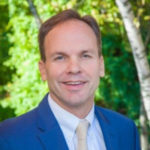No other profession can be as intense, unyielding, and emotionally and physically taxing as that of a medical doctor. They work long hours and often confront human trauma head-on. They have to manage the daily stresses of work and have performative obligations that can ultimately result in the life or death of a patient. Being a doctor is ultimately a high-stakes job. This is why doctor burnout rates continue to rise.
These unique stressors are why doctors have the highest suicide rate of any profession at 28 to 40 per 100,000, which is more than twice that of the general population, according to WebMD. That means 300 to 400 doctors kill themselves every year, which is about a doctor a day.
Like most of us, doctors reach for relief that is most readily accessible. For a good number of them, it is prescription pills. According to a 2013 study published in the Journal of Addiction Medicine, 69 percent of doctors abused prescription medicine.
A doctor named Peter Grinspoon wrote about his addiction and the phenomenon of physician drug abuse for a June 2016 edition of the Los Angeles Times, stating, “My access to prescription medications was virtually unlimited. Drug companies send doctors free samples. Patients bring in their unused painkillers for disposal. Colleagues freely write a [prescription] or two as a professional courtesy. And I foolishly made illegal use of my own prescription pad.”
While many state medical boards offer doctors access to addiction treatment, many do not seek those services because of the professional taint and punishment that could result. “Addicted physicians face colossal stigma and the very real possibility they will lose their license if they come forward,” Grinspoon wrote.
For doctors grappling with addiction, a private, confidential treatment program can be a viable solution. It can provide physicians with the necessary recovery services to get them well without the punitive consequences that come from medical board-directed treatment.
Commonly Abused Drugs Among Doctors
Like most of us, doctors tend to abuse the same medications as members of the general public. The most commonly abused drugs by doctors are:
Prescription opioids.
These medications are typically prescribed to treat acute episodes of pain. Doctors tend to have access to generous amounts of these narcotic painkillers, which can produce addiction when they are taken for longer-than-prescribed periods. The preferred medications of abuse among doctors happen to be prescription opioids. Examples of commonly abused opioids among doctors include oxycodone (OxyContin, Percocet) and hydrocodone (Vicodin).
Benzodiazepines.
This class of medicines is typically prescribed to treat anxiety, insomnia, and seizures. They are also prescribed to relax the muscles. They also happen to be abused the most by medical professionals along with opioids. Common benzodiazepine medications include diazepam (Valium), clonazepam (Klonopin), alprazolam (Xanax), triazolam (Halcion), and estazolam (Prosom).
Alcohol.
As the most widely abused substance in the United States, alcohol is the third leading cause of preventable death in the U.S. Also, 15.1 million adults 18 years of age and older had an alcohol use disorder (AUD), according to the 2015 National Survey on Drug Abuse and Health (NSDUH). Doctors are not immune. A study from 2012 reported that one in six surgeons had an alcohol use problem.
Doctor Signs of Abuse and Addiction
Drug abuse among health care professionals is more common than you think. In fact, it is enough of a problem that the U.S. Drug Enforcement Agency (DEA) published resource information on the unique signs of abuse and addiction among this population.
According to the DEA, A Drug-Impaired Doctor or Health Care Professional Can Exhibit the Following Signs and Behaviors:
- Work absenteeism – absences without notification and an excessive number of sick days used;
- Frequent disappearances from the work site, having long unexplained absences, making improbable excuses and taking frequent or long trips to the bathroom or to the stockroom where drugs are kept;
- Excessive amounts of time spent near a drug supply. They volunteer for overtime and are at work when not scheduled to be there;
- Unreliability in keeping appointments and meeting deadlines;
- Work performance that alternates between periods of high and low productivity and may suffer from mistakes made due to inattention, poor judgment, and bad decisions;
- Confusion, memory loss, and difficulty concentrating or recalling details and instructions; Ordinary tasks require greater effort and consume more time;
- Interpersonal relations with colleagues, staff, and patients suffer; rarely admits errors or accepts blame for errors or oversights;
- Heavy “wastage” of drugs;
- Sloppy recordkeeping, suspect ledger entries and drug shortages;
- Inappropriate prescriptions for large narcotic doses;
- Insistence on personal administration of injected narcotics to patients;
- Progressive deterioration in personal appearance and hygiene;
- Uncharacteristic deterioration of handwriting and charting;
- Wearing long sleeves when inappropriate;
- Personality change — mood swings, anxiety, depression, lack of impulse control, suicidal thoughts or gestures;
- Patient and staff complaints about health care provider’s changing attitude/behavior;
- Increasing personal and professional isolation.
Why Treatment Matters

A startlingly low number of doctors with substance abuse problems receive the help they need. In fact, Grinspoon wrote that troubled doctors do not come forward about their addiction issues “until disaster strikes,” like “a DUI, showing up high in the operating room” or being charged with a crime.
However, once physicians receive treatment, they tend to have a high rate of recovery. “As it turns out, physicians, once they get help, often excel at rehab…we succeed at rates of 70 to 80 percent, which for addiction is astronomically high,” Grinspoon writes.
A report by Pew Charitable Trusts substantiates Grinspoon’s claim. According to Pew, confidential substance abuse treatment programs have about an 80 percent success rate, where the typical rate for the general population is around 50 percent.
The Pew report cites a survey of close to 40 confidential program directors, which states that nearly 80 percent of doctors remained sober throughout the five-year program, and 70 percent continued to practice medicine.
What the stats point to is this: For doctors with substance use disorders (SUDs), private, professional treatment makes a difference.
What Private Professional Treatment Entails
For doctors with substance addictions, professional treatment offers comprehensive therapy and services that address the entire individual — mind, body, and soul.
Professional recovery begins with medical detoxification, a process that is administered through acute treatment. At this stage, a medical staff provides 24-hour care and supervision. Doctors, nurses, and other personnel medically address the significant withdrawal symptoms that arise in detox.
For significant cases of addiction involving opioids, alcohol, benzodiazepines, or cocaine, there is clinical stabilization, which occurs after detox. Clinical stabilization consists of comprehensive therapy and counseling designed to uncover the underlying causes of addiction.

The next treatment step is outpatient care, which provides part-time therapy and counseling. This allows you to receive ongoing support while giving you the flexibility and freedom to attend to life’s obligations.
Once treatment is completed, a caseworker can help you or a loved one get connected to a recovery community that can provide additional support and a hedge against relapse.
Get Help Today
Let us help you get your life back by connecting you to a private, reputable recovery program that can effectively treat your addiction.
Call 855-956-4940 anytime, day or evening, for a free consultation with one of our knowledgeable addiction recovery specialists. They can help you find the right treatment option. You can also contact us online for more information.

